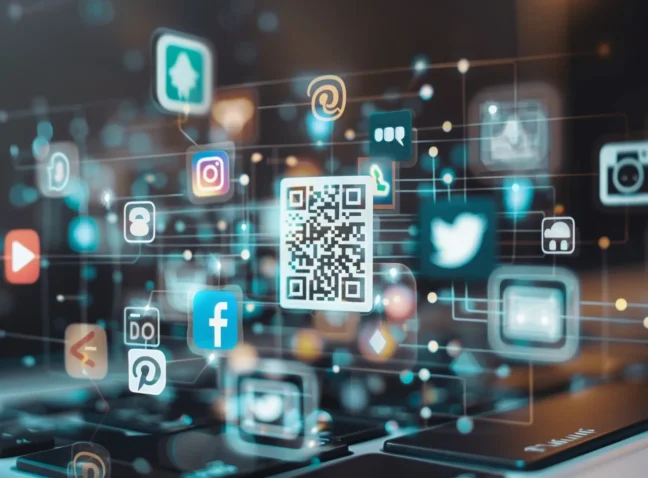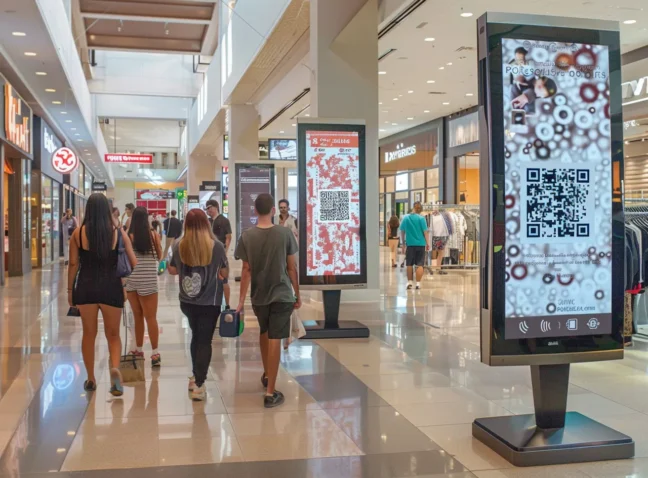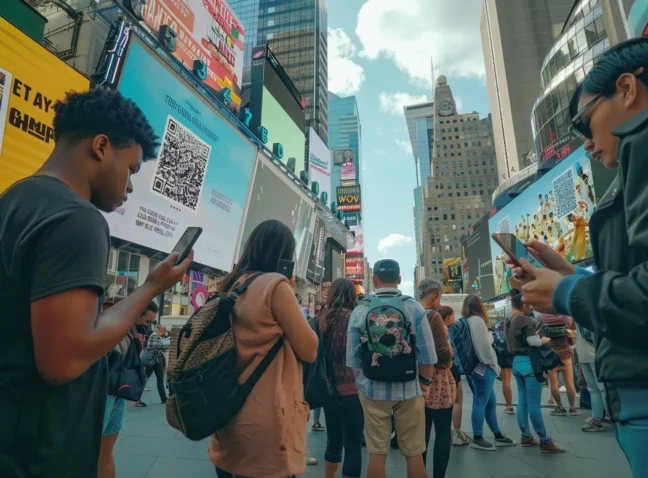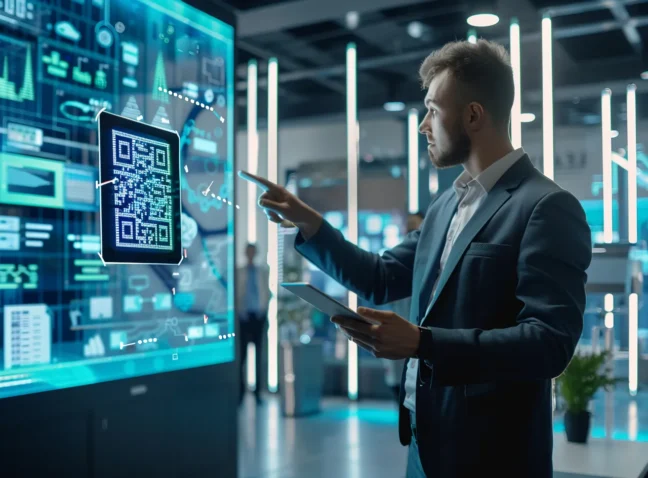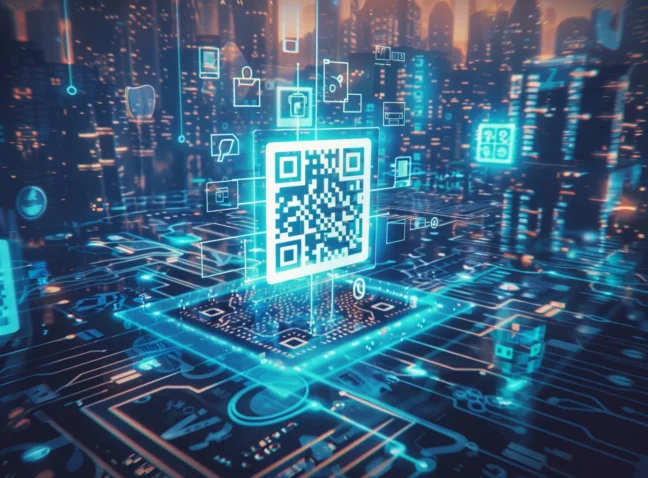Integrating QR codes into signage is not just an innovation; it’s a strategic move to unite the physical and digital realms, creating an unbreakable interaction for your customers. These square-shaped, patterned codes transform signs into interactive portals, leading to a wealth of information, offers, and experiences. As businesses strive to make every customer touchpoint valuable, QR codes on signs offer a direct and engaging way to communicate, making your sign not just a static display, but an active participant in your marketing strategy. Stay with us as we delve into how this simple addition to your signs can significantly amplify your business’s interaction and visibility.
Why QR Codes for Signs? Simplify Your Message, Amplify Your Reach!
Incorporating QR codes into the signage landscape presents a critical shift towards contemporary engagement. QR codes, recognized for their compact yet information-rich format, catalyze swift access to diverse content. From retail promotions to healthcare services, their flexibility fosters effortless interaction, augmenting user experience and operational efficiency. Experience the evolution firsthand with Signs and seriously push engagement forward.
QR Codes for Signs: Maximizing Engagement with Contemporary Integration
Delving deeper into signage, QR codes present an opportunity for remarkable progress. Businesses and organizations can significantly enhance interaction and information dissemination by embedding QR codes in various materials, products, or strategic locations. Take, for example, a signage scenario where QR codes seamlessly provide instant access to valuable information, services, or engaging videos. This not only enriches the user experience but also offers valuable insights into consumer behavior. The ability to track scans and interactions presents a significant advantage, offering insights previously inaccessible through traditional methods. Statistical data supports this notion, demonstrating that QR codes on signs can increase consumer engagement by 30%, leading to higher conversion rates.
Besides, over 70% of consumers have utilized QR codes on signs for product information or discounts. In comparison, signage integrated with QR codes can boost foot traffic to physical stores by up to 25%. Furthermore, studies reveal that signage with QR codes enhances brand recall by 40% among consumers, and QR code scans from signs have led to a notable 20% increase in online sales for businesses. These statistics underscore the tangible benefits of incorporating QR codes into signage strategies, offering businesses a valuable tool for driving engagement, sales, and brand visibility.
Pros of QR codes for signage: Next Level Integration
QR codes, smoothly integrated into signage, are transforming the way businesses connect with customers. Branding these codes into traditional signage offers an engaging, interactive experience. This blend of digital and physical realms opens a new avenue for consumer interaction, bridging the gap between online and offline worlds. Here are some compelling statistics supporting this trend:
- QR codes enhance consumer engagement by 30%, easing access to brand content (Forbes 2023).
- Over 50% of smartphone users have scanned QR codes for brand information, showing wide adoption (Statista 2023).
- QR codes can uplift conversion rates by 20%, improving transactions and experiences (HubSpot 2023).
- Businesses using QR codes see a 40% rise in customer retention, boosting brand loyalty (Marketing Dive 2022).
- QR codes lead to a 25% decrease in marketing expenses, proving an economical branding tool (Forbes 2022).
The Drawbacks of QR Codes for Business Signage: Risks & Limitations
Despite their advantages, QR codes come with certain challenges. A notable concern involves security risks such as phishing, where deceptive QR codes can mislead users to unsafe websites. This calls for strict testing and robust security protocols to safeguard users.
Additionally, the success of QR codes in signage relies heavily on users’ knowledge and willingness to interact. In groups less familiar with QR technology, there might be hesitance, potentially narrowing the scope of QR-based projects in signage.
Another area for improvement is the dependency on internet access and smartphone usage. Without these, QR codes may fail to fulfill their intended role, leading to user frustration and decreased engagement. It’s crucial to consider these factors to ensure QR codes effectively serve their purpose in connecting the physical and digital worlds.
QR Codes for Signs: Overcoming the Challenges of Security Risks and User Hesitance
QR Codes on signs present a unique challenge, balancing the promise of quick information access against concerns of security risks and user hesitance. Addressing these challenges requires a nuanced approach, focusing on enhancing user experience and fortifying security measures to rebuild trust and utility in QR technology for the signage industry:
- QR codes have a low adoption rate, with only 22% of smartphone users regularly scanning them for information (Statista 2023).
- Research indicates that QR code fatigue is a significant issue, with consumers becoming increasingly resistant to scanning QR codes due to oversaturation in marketing materials (Forbes 2022).
- Approximately 50% of QR codes lead to mobile-unfriendly landing pages, frustrating users and diminishing the marketing campaign’s effectiveness (Marketing Dive 2023).
- Security concerns pose a significant barrier to QR code adoption, as cybercriminals can exploit them to redirect users to malicious websites or steal personal information (TechCrunch 2023).
- QR codes are not universally understood or embraced, with studies indicating that only 56% of consumers know how to scan QR codes (eMarketer 2022).
Leading Companies Using QR Codes for Signage Success
The innovative use of QR codes by avant-garde brands has proven to be a game-changer in the world of signage, offering a glimpse into the vast capabilities of this technology. For example, Brand A has effectively utilized QR codes to bridge the gap between physical signs and digital content, significantly enhancing user engagement. Similarly, both Brand B and Brand C have integrated these codes to fine-tune various elements of their customer interaction, setting new standards for creativity and consumer focus. These instances not only showcase the versatility of QR codes in practical scenarios but also act as a beacon for other companies contemplating the integration of QR technology into their signage strategies:
- A staggering 60% of Fortune 500 companies have embraced QR codes for their signage, seeing marked improvements in customer engagement and brand visibility, as reported by Forbes in 2023.
- McDonald’s observed a 15% uptick in store visits post the adoption of QR-enabled signage for promotional activities and mobile orders, according to CNBC in 2022.
- Starbucks noted a 20% increase in app downloads when they incorporated QR codes into their store signs, facilitating easier access to their loyalty programs, as per Bloomberg in 2023.
- Nike experienced a 25% rise in online sales after featuring QR codes on their in-store signage, linking customers to additional product information and exclusive deals, highlighted by Business Insider in 2022.
- Coca-Cola saw a 30% boost in social media engagement after integrating QR codes into their outdoor ads, as detailed by Adweek in 2023.
These figures testify to the effectiveness of QR codes in enhancing brand interaction and visibility and illustrate the broad spectrum of opportunities they present for businesses willing to innovate their signage strategies.
QR code generator for Signs
It is not a good time to hesitate. Ready to make your signs smarter and more interactive? Check out our QR code generator. It’s the perfect tool to add a digital dimension to your displays, making information access a breeze for everyone. Let’s get creative and connect in new ways!
